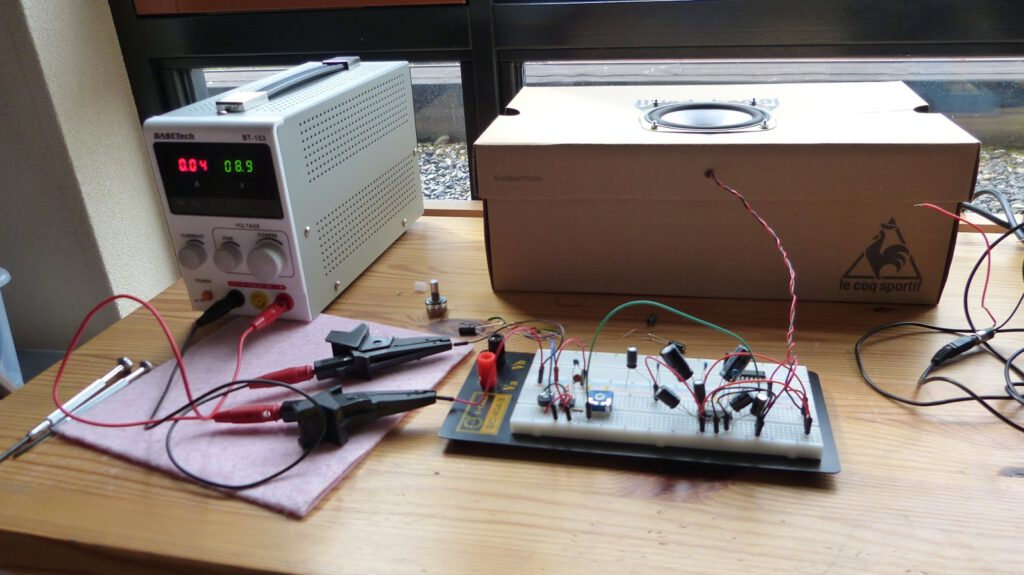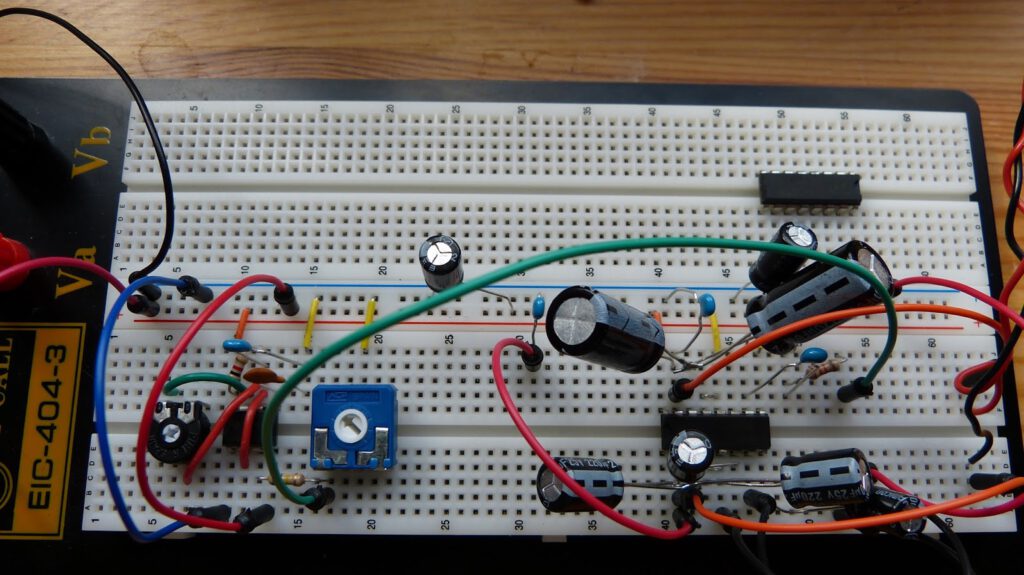During experiment 29 and 30 of Make:Electronics I noticed that the circuit was very susceptible to noise to the point that it really interfered with the experiments. While thinking about it I suspected that something was wrong with the breadboard. I decided to redo both experiments with a another breadboard (but without the low pass and high pass filter). I immediately discovered that the sound was more clear than before. I also discovered that at 9V the circuit only took 40mV whereas the same circuit on the old breadboard took 200mV. A clear sign that the old breadboard was malfunctioning (possibly due to a burn-out).
Previously I wrote about the TEA2025B amplifier becoming very hot. So hot that I decided to reduce the voltage of the circuit from 9V to 4.5V. The same amplifier in the current breadboard is not hot at all even at 9V! Not surprisingly since the heat generated by the amplifier is proportional to the square amperage.
The lesson here is that even the unsuspected elements can be a variable in experiments.


Thanks for reading!